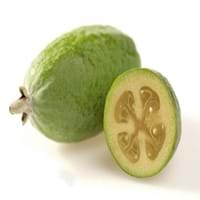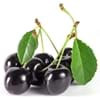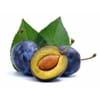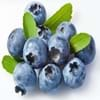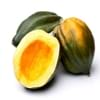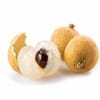Health Benefits
Cancer prevention, Improves eye vision, Prevents diabetes, Prevents high blood pressure
Anti depressant, Cancer prevention, Reduces nervous tension, Treatment of alzheimer's disease, Treatment of Lung disease
General Benefits
Cures inflamed tonsils, Helps in weight loss, Maintains healthy cholesterol level
Digestive aid, Helps in weight loss, Improves blood circulation, Strengthens bones, Treatment of common cold
Skin Benefits
Anti-aging benefits, Protects skin from oxidative stress
Brightens and lightens complexion, Skin rejuvenation
Hair Benefits
Protects hair
Promotes longer and healthier hair, Protects hair
Allergy Symptoms
Anaphylaxis, Coughing, Diarrhea, Eczema, Hives, Itching sensation in throat, Nausea, Skin Rashes, Runny nose, Sneezing, Swelling of mouth, tongue or lips, Vomiting, Wheezing
NA
Side Effects
Heart burn
Allergic reaction
Best Time to Eat
Along with meal, As a snack in the late afternoon, Don't consume at night and before bed, Don't eat after meal, Morning time (before lunch)
As a snack in the late afternoon, Don't consume at night and before bed, Eat the fresh ones, avoid mixing with any other foods, don't eat after meal., Morning time (before lunch)
Vitamin A (Retinol)
Not Available
Vitamin B5 (Pantothenic Acid)
Vitamin C (Ascorbic Acid)
Vitamin K (Phyllochinone)
Phytosterol
Not Available
Calories in Fresh Fruit with Peel
Not Available
Not Available
Calories in Fresh Fruit without Peel
Calories in Frozen Form
Not Available
Not Available
Calories in Canned Form
Not Available
Type
Fruit vegetable
Tree fruit
Season
All seasons
Autumn, Winter
Varieties
Tamarillo bold gold, Tamarillo red beau, Tamarillo tango and Tamarillo teds red
Anatoki, Gemini, Kaiteri, Kakariki, Pounamu, Unique, Apollo, Den's Choice, Kakapo, Mammoth, Opal Star, Triumph and Wiki Tu
Color
Orange, Red, Yellow
Green
Inside Color
Creamy Yellow
White
Origin
South Africa
Argentina, Brazil, Paraguay, Uruguay
Grows on
Trees
Not Available
Soil Type
Sandy loam, Well-drained
Clay loam, Gravely loam, Sandy
Climatic Conditions
Rainfall, Warm
Cold, Warm
Facts about
- Up until 1967, tamarillos were referred to as tree tomatoes.
- The name tamarillo is derived from Maori word 'tama' which means leadership and rillo from spanish word 'amarillo' which means yellow.
- Feijoa is called as "pineapple guava" in some countries.
- Feijoa tree is an ornamental plant that can also be used as hedge & windbreak.
- All parts of feijoa fruit are edible(skin is mostly discarded).
Top Producer
New Zealand
New Zealand
Other Countries
Australia, Chile, Colombia, Malaysia, Peru, Philippines
Australia, Azerbaijan, India, Japan, United States of America
Top Importer
United States of America
China
Top Exporter
New Zealand
New Zealand
Botanical Name
Solanum betaceum
Acca sellowiana
Synonym
tree tomato, genus Cyphomandra, Cyphomandra
Feijoa sellowiana or Orthostemon sellowianus
Subkingdom
Tracheobionta
Tracheobionta
Division
Magnoliophyta
Magnoliophyta
Class
Magnoliopsida
Magnoliopsida
Subclass
Asteridae
Rosidae
Family
Solanaceae
Myrtaceae
Species
Solanum betaceum
A. sellowiana
Generic Group
Nightshade
Myrtle
Difference Between Tamarillo and Feijoa
We might think that Tamarillo and Feijoa are similar with respect to nutritional value and health benefits. But the nutrient content of both fruits is different. Tamarillo and Feijoa Facts such as their taste, shape, color, and size are also distinct. The difference between Tamarillo and Feijoa is explained here.
The amount of calories in 100 gm of fresh Tamarillo and Feijoa with peel is Not Available and Not Available and the amount of calories without peel is 31.00 kcal and 55.00 kcal respectively. Thus, Tamarillo and Feijoa belong to Low Calorie Fruits and Low Calorie Fruits category.These fruits might or might not differ with respect to their scientific classification. The order of Tamarillo and Feijoa is Solanales and Myrtales respectively. Tamarillo belongs to Solanaceae family and Feijoa belongs to Myrtaceae family. Tamarillo belongs to Solanum genus of Solanum betaceum species and Feijoa belongs to Acca genus of A. sellowiana species. Beings plants, both fruits belong to Plantae Kingdom.

